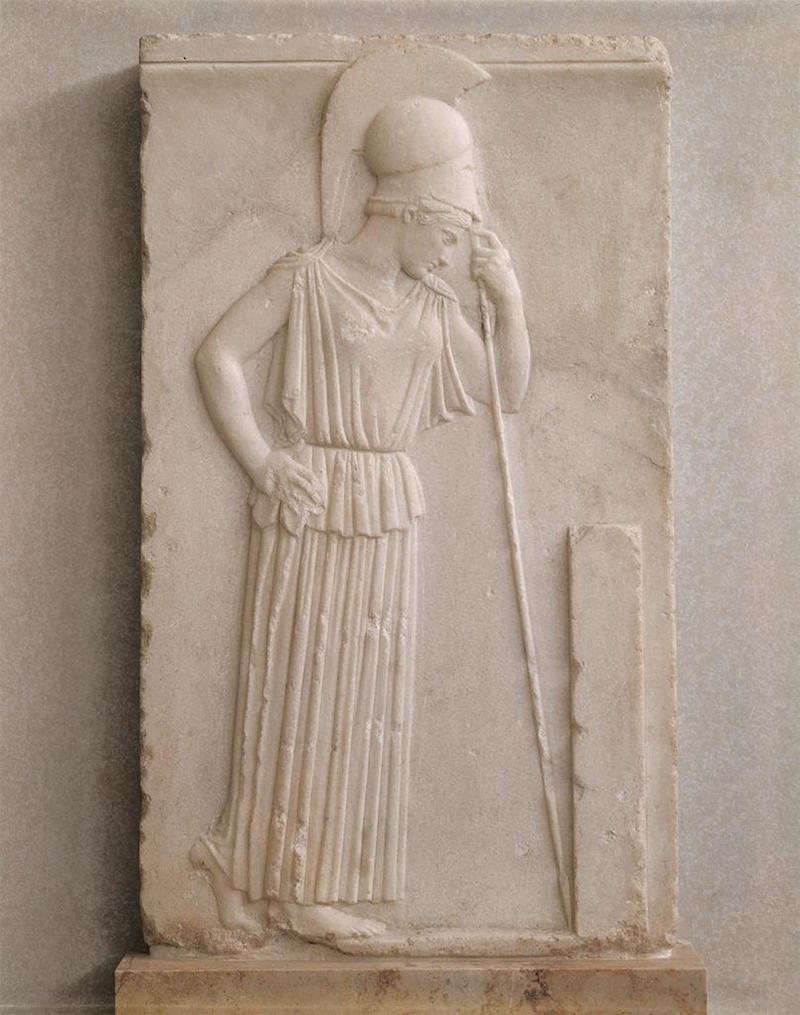This is one of the most famous sculptures from the Athenian Acropolis. Athena is presented in front of what may be a stele, a stone slab that serves as a grave marker, leaning on her spear in a relaxed manner. The stele has been variously interpreted either as a boundary marker of a sanctuary, a catalogue of treasures, or a list of war casualties. The marble is from the island of Paros.
The goddess, marked by her helmet of the Corinthian type, wears a peplos, clasped at the shoulders and cinched at the waist. She rests her right hand on her hip and crosses her left leg over her right. Her left hand grasps a spear on which she leans, and her head is inclined. The meaning of her bowed head has been a matter of debate since the relief's excavation from the Acropolis of Athens in 1888.
As the conventional name suggests, many have taken the posture to indicate sadness or pensiveness, and thus to interpret the rectangular object on the viewer's right as a stele. Others see an “exhausted Athena”, and others still see no such emotion. The exact nature of the orthogonal object, too, is unclear—some suggest that an object was perched atop it (e.g., the infant Erichthonius) —others that it is a marker from a race-course.


 Unknown Artist
Unknown Artist